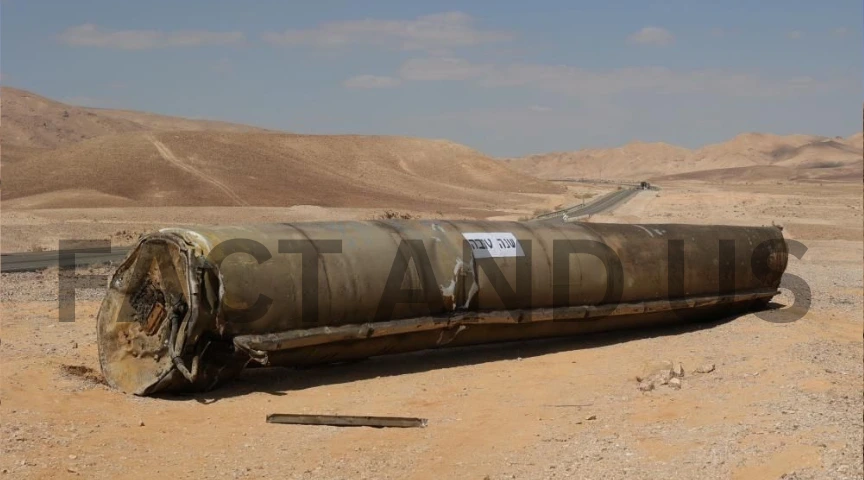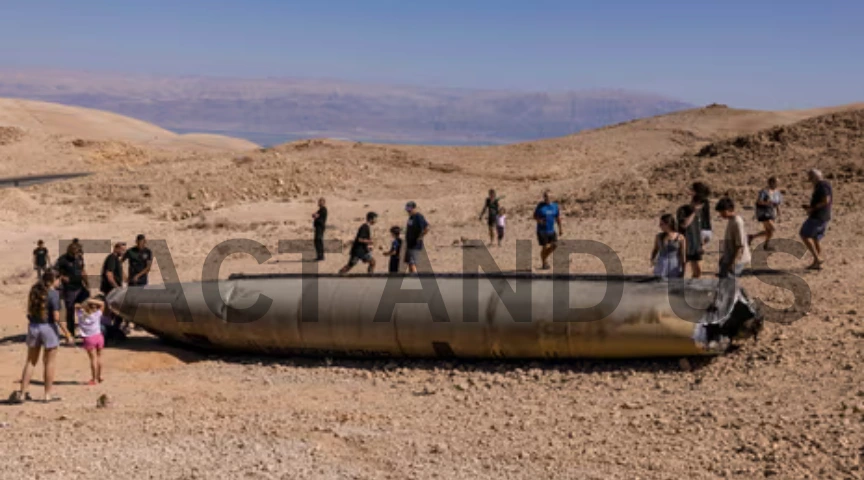A recent leak by US intelligence has brought into public notice Israel’s intentions for a possible military strike at Iran, ramping up the tension between the two countries. The leak, already causing ripples in the diplomatic circles, gives a rare view into Israel’s strategic calculus and potential strategies that it is mulling to neutralize what it perceives as an existential threat emanating from Tehran’s nuclear program. But what does this assessment really show, and what could it mean for the region and the world?

US investigators are racing to explain how a pair of highly classified intelligence documents ended up on a messaging app in the public domain. The documents appeared Friday on the app Telegram, including an alleged U.S. assessment about Israeli plans to attack Iran. The assessments are said to be based on interpretation of satellite imagery and other intelligence.
White House National Security Council spokesman John Kirby said on Monday that President Joe Biden was “deeply concerned” by the leak. Officials have not decided whether the documents were leaked due to a hack or a leak, Mr Kirby said. For three weeks now, Israel has been promising to hit Iran hard in retaliation for Iran’s massed ballistic missile attack on Israel on 1 October.
Iran claims that was a retaliatory measure in response to an assassination by Israel on 27 September of Hezbollah leader, Hassan Nasrallah.
Contents
- 1 Are these documents authentic?
- 2 What do they tell us?
- 3 Israel’s Long-Standing Concerns
- 4 What the U.S. Intelligence Assessment Shows
- 5 Some of the major points revealed by the assessment include:
- 6 A Delicate Balancing Act for Israel
- 7 What’s Next?
- 8 U.S.-Israel Relations: The Card To Be Played End
- 9 Conclusion
Are these documents authentic?
Military analysts say the wording in the headings looks legitimate and fits in with other classified documents disclosed to the public in the past. Headed “Top Secret”, they feature the abbreviation “FGI”, for “Foreign Government Intelligence”. The documents seem to have been distributed to intelligence services in the Five Eyes alliance, the five Western nations that share intelligence regularly- the US, UK, Canada, Australia and New Zealand.


The acronym “TK” in the documents refers to “Talent Keyhole”, a codeword covering satellite-based Signals Intelligence (SIGINT) and Imagery Intelligence (IMINT).
What do they tell us?
Together, the two documents present a classified US assessment of Israel’s preparations to hit targets in Iran, based on intelligence analyzed by the US National Geospatial-Intelligence Agency during 15-16 October. What stands out, however, is the mention of two Air Launched Ballistic Missile (ABLM) systems: Golden Horizon and Rocks.
The Rock is a long-range missile system designed to hit various ground targets both below and above ground by the Israeli company Rafael. Golden Horizon is believed to be the Blue Sparrow missile system, with an approximate range of around 2,000km (1,240 miles).

The significance of this is that it would indicate that the Israeli Air Force is planning to carry out a similar but greatly expanded version of its ABLM attack on an Iranian radar site near Isfahan in April. By launching these weapons from long range and far from Iran’s borders it would avoid the need for Israeli warplanes to overfly certain countries in the region like Jordan.
The documents also report that there is no sign of any preparations by Israel to activate its nuclear deterrent. The US government never publicly acknowledges that its close ally Israel even possesses nuclear weapons, so this has caused some embarrassment in Washington at Israel’s request.
Israel’s Long-Standing Concerns
Now for many years, Israel has seen Iran’s nuclear ambition as a clear and present danger to its existence. In fact, for decades, Israeli officials have iterated that it will not permit Iran to possess a nuclear capability because it would destabilize the entire region and embolden Tehran’s aggressive posture toward Israel and its allies. Iran, however, maintains that the nuclear program is for peaceful purposes, although many in the West doubt its sincerity.

The leaked U.S. assessment discloses that Israeli military officials are busily preparing for a preventive strike against Iran’s nuclear facilities. That is not so shocking in its entirety—Israel has been clear on the fact that it reserves all options to prevent the country from becoming a nuclear power. However, the leak offers new information about the depth and scope of Israel’s planning.
What the U.S. Intelligence Assessment Shows
The leaked document states that Israeli officials are closely monitoring development within the nuclear program in Iran, further refining their military plans regarding what they believe is an acceleration of a perceived threat. Their assessment would most likely send a series of coordinated airstrikes to key Iranian nuclear sites capable of crippling Tehran’s ability to produce a nuclear weapon.
Some of the major points revealed by the assessment include:
High-level military preparations: Reports have come out stating that the Israeli defense forces were gearing up for a rather complex and multifaceted operation, possibly using their high-tech fighter jets, precision-guided munitions, as well as even cyber warfare capabilities to disrupt the Iranian defenses.
Regional Blowback: Israeli planners very much fear that an attack on Iran could embroil them in a larger regional war, given the closeness of relations between Iran and Hezbollah in Lebanon and other proxy militias distributed throughout the Middle East. In this view, Israeli planners believe that Israeli leaders are weighing these considerations and trying to prepare for the possibility of retaliatory attacks.

Coordination with the U.S.: The paper implies that Israel may require some amount of cooperation from the U.S. or, at worst, backroom acquiescence to a strike, but that would be unclear in Washington’s response. Not so much an uninterested bystander, the U.S. also has its reasons to be wary of Iran’s nuclear ambition, but it had hitherto avoided military action against Iran and preferred to fix the situation through diplomacy.
Timing and Triggers: The leak suggests that Israel is monitoring key developments within Iran’s nuclear program closely, seeking “red lines” for military action. This could include the enrichment of uranium to weapons-grade levels or installation of advanced centrifuges that can significantly reduce the time needed for Iran to make a nuclear bomb.
A Delicate Balancing Act for Israel
For Israel, launching a strike on Iran is full of risk. On the one hand, Israeli leaders feel a deep obligation to keep Iran from acquiring nuclear weapons at whatever cost. On the other, such a strike could provoke a massive regional conflict, with consequences hard to predict.
The leaked assessment highlights the tightrope that Israel is walking. It must ensure that any military action is swift and decisive but limited enough not to drag the entire region into war. Furthermore, Israel would need to manage its relationship with key international players-the United States, Europe, and neighboring Arab states-many of whom are rather wary of a military confrontation with Iran.
What’s Next?
While the leaked assessment provides insight into Israel’s strategic thinking, it does not necessarily mean that a strike on Iran is imminent. Military planning often involves preparing for worst-case scenarios, and it’s possible that Israel is simply keeping its options open while continuing to pursue other means of curbing Iran’s nuclear ambitions.
But the leak does highlight high stakes. If diplomatic efforts to contain Iran’s nuclear programme continue to fail—especially after the collapse of the 2015 nuclear deal-Israel may feel it has no option but to act. If that’s the case, the implications might be disastrous not just for the Middle East but for global stability as well.
U.S.-Israel Relations: The Card To Be Played End
One of the most critical indicators of whether Israel will act is its relationship with the United States. Even though Israel has demonstrated in the past that it will go to unilateral military action if it feels threatened (like the strikes that it initiated at Iraq’s nuclear reactor in 1981 and Syria’s in 2007), a strike on Iran would be much more complex and likely will require some degree of U.S. support.

The leaked assessment would suggest that Israeli officials are very well aware of the need for coordination with Washington, particularly in terms of intelligence sharing and diplomatic backup. However, whether the U.S. would greenlight such a strike or want to continue diplomatic engagement with Iran remains to be seen.
Conclusion
The leaked U.S. assessment of Israel’s possible plans to strike Iran gives a sober look at the rising tensions between the two countries. Israel is preparing for the possibility of military action, but such a move would involve enormous risks for both Israel and the broader region. Much will depend on whether diplomatic efforts can prevent the need for military intervention, or whether Israel feels that a preemptive strike is the only way it can safeguard its future.
For now, the world watches and waits, hoping that cooler heads prevail, and that the night
stay connected with fact and us for more such news
